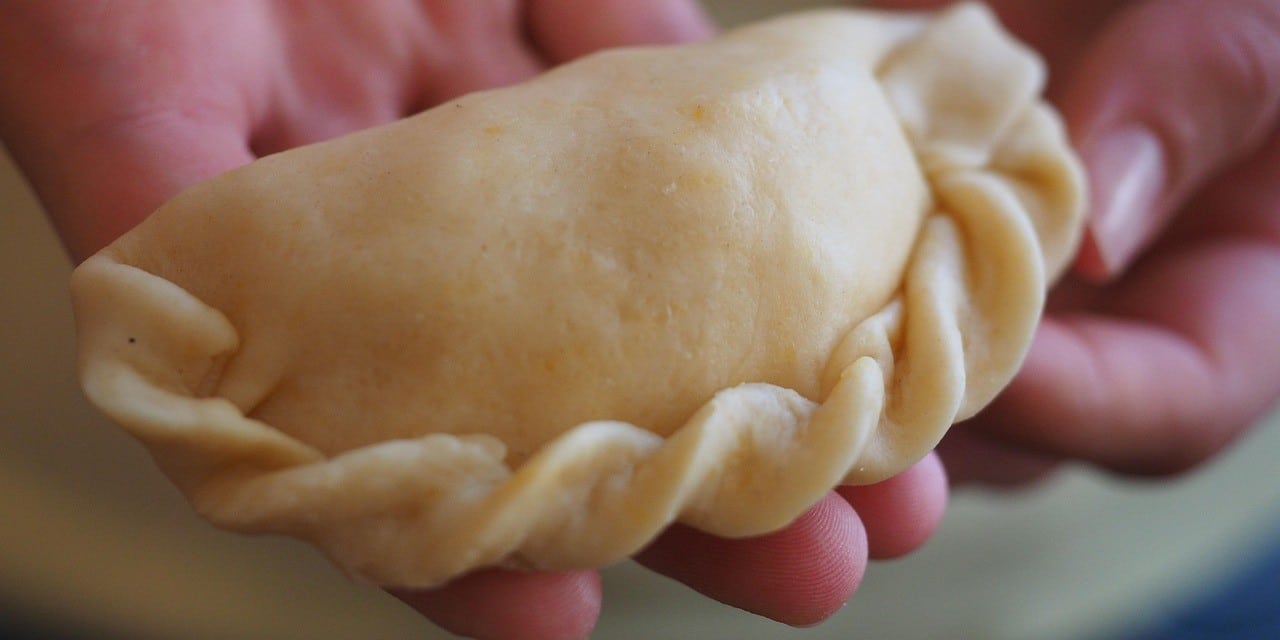
Want to learn more about this tasty food? Here you’ll learn a thing or two about empanadas, along with some insights into Chilean culture and its close ties to this delicious pastry.
Empanadas are quickly gaining popularity around the world. They aren’t just popular in Latin America, Spain or Portugal anymore; now you can find them even in English-speaking countries. This article explores the history, variations and cultural significance of empanadas.
What is an Empanada?
They are a type of pastry made of a fairly thin dough, which can have a bread-like consistency or be flakier, with a sweet or savory filling.
Its pronunciation is easier than it might seem: em-puh-naa-thuh. The Chilean pronunciation is a bit different. In this Spanish variant, speakers tend to drop the “thuh,” and just say “em-puh-naa.”
Origin
Tracing the exact origin of this delicious food can be challenging. Nevertheless, most sources point to Portugal and Spain during the Middle Ages. Some say the word itself comes from the word pan (bread in Spanish), which becomes a verb to say empanar, basically, surround something with bread.
The most widely accepted theory is that empanadas were used as convenience food: people could fill bread with vegetables or meat and take them on trips. This also helped preserve the filling for a bit longer. To make them even more convenient, people started cooking the bread dough with the filling to save time. Over the years, the dough was tweaked for a tastier consistency, giving us the empanada we know today.
Empanadas in Chile
During the early colonization period, around 1540, Spaniards brought with them a new and groundbreaking food: Empanadas. People seemed to like it, and criollos (people of Spanish descent born in Latin America) started experimenting with the original recipe. They added grease to the dough, usually in the form of butter, making it moister and tastier. They also took inspiration from the Mapuche, the indigenous people of Chile, who used “pino” (a meat mince with garlic, onion, raisins, and chili) in many of their foods. The criollos decided to put this pino into the empanadas, along with a slice of hard-boiled egg.
Evidence suggests that Chilean empanadas, as we know them today, were made as early as 1652. A painting in the Cathedral of Santiago called “Holy Dinner” depicts an empanada, indicating it had already become a Chilean staple by that time.
Modern Variations
Today, you can find endless fillings and doughs for empanadas. Some have seafood, others have cheese and plantain. While variations often depend on the country, personal preference also plays a significant role.
Typical Chilean empanadas are made with pino, which contains meat, but in recent years, vegans have adapted the recipe so they can enjoy them too. Empanada consumption in Chile is usually once or twice a month, but during September, it skyrockets. This is because empanadas are closely tied to Chilean tradition, and during the month of Chile’s independence, they quickly fill every store, fair, and family table. Vegans have come up with creative ways to replace meat, using ingredients like textured vegetable protein, quinoa, or black beans. Some even make vegan hard-boiled eggs with tofu, corn starch, and mustard.
Empanadas Beyond the “Empanada”
Some argue that empanadas are present in many cultures, not just the ones mentioned throughout this article. Although this is a hot debate which can ruffle some feathers, there are foods around the world which follow the same empanada principle.
We already covered the basics: Empanadas are a dough with a filling. If we take this definition and apply it elsewhere, we could mention foods like samosas (India), dumplings (China) and panzerotti (Italy).
Wrapping up like a perfectly folded empanada!
This tasty stuffed pastry is extremely versatile; it can be sweet or savory, big or small, fried or oven-baked, vegan or non-vegan! Whatever the case may be, you can always adapt them to suit even the pickiest eater.
Are you ready to make your own empanada at home? Or do you want to learn more about other cultures?
Culture and Business: 5 Books to Understand the Connection
7 Essential Japanese Phrases for Traveling to Japan
Fictional Languages: Exploring their Origin and Cultural Significance
Category: Culture
Don't forget to share this post!
Stay Updated with Interpro
Subscribe to our newsletter for the latest updates and insights in translation and localization.






